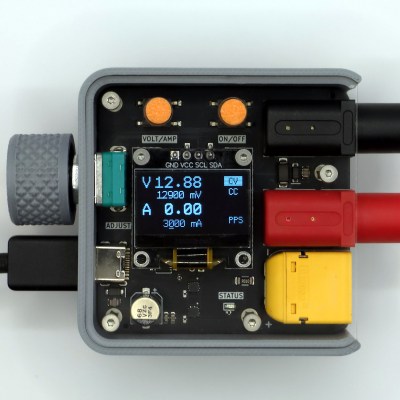These days, oscilloscope hacking is all about enabling features that the manufacturer baked into the hardware but locked out in the firmware. Those hacks are cool, of course, but back in the days of analog scopes, unlocking new features required a decidedly more hardware-based approach.
For an example of this, take a look at this oscilloscope beam splitter by [Lockdown Electronics]. It’s a simple way to turn a single-channel scope into a dual-channel scope using what amounts to time-division multiplexing. A 555 timer is set up as an astable oscillator generating a 2.5-kHz square wave. That’s fed into the bases of a pair of transistors, one NPN and the other PNP. The collectors of each transistor are connected to the two input signals, each biased to either the positive or negative rail of the power supply. As the 555 swings back and forth it alternately applies each input signal to the output of the beam splitter, which goes to the scope. The result is two independent traces on the analog scope, like magic.
More after the break…
Continue reading “Double Your Analog Oscilloscope Fun With This Retro Beam Splitter”






![[James] and his Lemontron portable 3D printer](https://hackaday.com/wp-content/uploads/2024/11/lemontron-1200.jpg?w=600&h=450)
![Overhead photo of [James]' hands assembling the Lemontron Portable 3D printer](https://hackaday.com/wp-content/uploads/2024/11/My-3d-printer-is-almost-ready-to-release-16-56-screenshot.png?w=400) Recent video updates show the Lemontron in action, printing impressively large and complex models. It tackled a marble run with 80-degree unsupported overhangs and a ‘comically large’
Recent video updates show the Lemontron in action, printing impressively large and complex models. It tackled a marble run with 80-degree unsupported overhangs and a ‘comically large’ 









